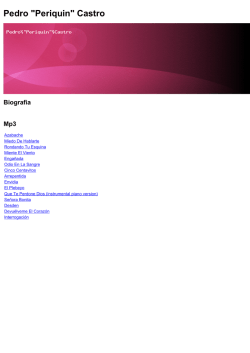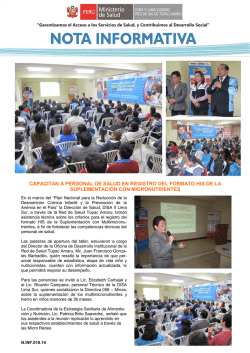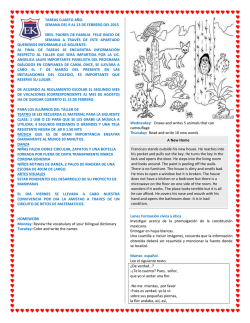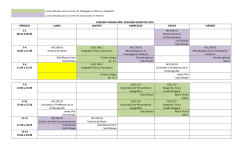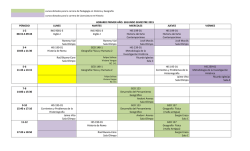
Le Corbusier - Arquitectura Viva
AV Monografías Monographs 176 (2015) Le Corbusier An Atlas of Landscapes AV Monografías Monographs 176 (2015) LE CORBUSIER An Atlas of Landscapes Director Editor Luis Fernández-Galiano Director adjunto Deputy Editor José Jaime S. Yuste Redacción Layout/Editorial Cuca Flores Eduardo Prieto Laura Fernández Miguel Fernández-Galiano Maite Báguena Raquel Vázquez Pablo Canga Miguel de la Ossa Alicia Gutiérrez Mar Pérez-Ayala Coordinación editorial Coordination Laura Mulas Gina Cariño Producción Production Laura González Jesús Pascual Administración Administration Francisco Soler Suscripciones Subscriptions Lola González Distribución Distribution Mar Rodríguez Publicidad Advertising Cecilia Rodríguez Teresa Maza Editor Publisher Arquitectura Viva SL Calle Aniceto Marinas, 32 E-28008 Madrid, España Tel: (+34) 915 487 317 Fax: (+34) 915 488 191 [email protected] www.ArquitecturaViva.com AV Monografías es miembro de ARCE Precio en España 30 euros © Arquitectura Viva Esta revista recibió una ayuda a la edición del Ministerio de Educación, Cultura y Deporte en 2014 Essays © 2015 The Museum of Modern Art, New York Todos los derechos reservados All rights reserved Depósito legal Legal registration: M-12540-2015 ISSN: 0213-487X ISBN: 978-84-606-7460-3 Impresión Printing: Artes Gráficas Palermo, S.L. Cubierta Cover: Plan for Buenos Aires Traducciones Translations Luis Carranza, Genevieve Hendricks, Christian Hubert, Laura Martínez de Guereñu, Marguerite Shore. Eduardo Prieto, Maite Báguena, Laura Mulas. 3 Luis Fernández-Galiano Geografías biográficas Biographic Geographies 4 Jean-Louis Cohen En defensa del paisaje In the Cause of Landscape Suiza Switzerland 20 Stanislaus von Moos El lago Lemán y los Alpes: marcos panorámicos Lake Geneva and the Alps: Framing the Panorama Italia Italy 28 Jean-Louis Cohen Roma: una lección de paisaje urbano Rome: A Lesson in Urban Landscape España Spain 36 Juan José Lahuerta España: viajar para ver lo previsto Spain: Traveling to See the Already Seen Francia France 44 Barry Bergdoll París: más allá de la ciudad del siglo XIX Paris: Beyond the Nineteenth-Century City 50 Tim Benton Marsella: Unité d’Habitation, una geografía Marseille: Unité d’Habitation, a Geography 56 Josep Quetglas Ronchamp: un paisaje de acústica visual Ronchamp: A Landscape of Visual Acoustics África Africa 64 Antoine Picon Argel: ciudad, infraestructura y paisaje Algiers: City, Infrastructure and Landscape América America 72 Jorge Francisco Liernur Argentina: la mirada geográfica Argentina: the Geographical Gaze 78 Carlos Eduardo Comas Brasil: tres ciudades, tres paisajes Brazil: Three Cities, Three Landscapes Asia Asia 86 Maristella Casciato Chandigarh: el paisaje de una nueva capital Chandigarh: Landscaping a New Capital 1 201? AV Monografías ??? Geografías biográficas Biographic Geographies Le Corbusier nos dejó hace cincuenta años, pero sigue estando testarudamente con nosotros. El centenario de su nacimiento en 1987 provocó una importante revisión crítica de su legado, que esta revista recogió en dos números consecutivos de ese año (AV 9 y 10), en los cuales participaron historiadores como Allen Brooks, Banham, Colquhoun, Curtis, Scully, Tzonis o Von Moos junto a un elenco de especialistas españoles. Ahora, el cincuentenario de su muerte propicia una revisión similar, alimentada por el sinnúmero de estudios aparecidos en este intervalo, y que hemos preferido presentar como una síntesis de la obra coral más significativa publicada al hilo del aniversario, el catálogo de la exposición realizada en el Museo de Arte Moderno de Nueva York en 2013, que viajó a Barcelona y Madrid el año siguiente, y donde su trayectoria vital se presentaba a través de las geografías de sus viajes y los paisajes de sus proyectos, para conformar el retrato de un maestro global. De ese extenso catálogo se extraen diez textos que cubren buena parte del mapamundi corbuseriano y dan testimonio de la variedad de enfoques de una nueva generación de estudiosos —sólo Von Moos repite respecto a los publicados con ocasión del centenario—, de manera que este número es tanto una mise au point del universo de Le Corbusier como una aproximación a los intereses contemporáneos. Enhebrados por el tema del paisaje, que Jean-Louis Cohen —editor del volumen y comisario de la muestra con Barry Bergdoll— ha elegido como hilo conductor de esta expedición, los artículos van jalonando un itinerario que lleva de la Suiza natal del arquitecto a la Francia donde desarrollaría la mayor parte de su vida profesional, con excursos viajeros a, entre otros países, Italia y España; examinan las respuestas urbanas que dio a las vastas geografías de África y América; y documentan la culminación de su trayecto en Asia con el diseño de la nueva capital del Punyab indio. Recorrido cronológico y atlas de paisajes, el Corbusier cartografiado por Cohen y el MoMA —que con este esfuerzo de investigación y difusión compensa la limitada atención que ha prestado al arquitecto en el pasado— muestra nuevos perfiles, pero no comete el error de trasvestir al maestro en paisajista. Como aclara el comisario y editor —y como ya se mencionó en la reseña del catálogo publicada en Arquitectura Viva 166— el paisaje «no tiene una presencia activa o reactiva en sus proyectos», ni implica una interpretación geográfica, porque es esencialmente una metáfora y una fuente de analogías y aforismos. De toda la cantera interpretativa que contiene el libro original se ofrece aquí una selección de textos representativos, que ojalá den una idea cabal del universo intelectual y artístico de un gran arquitecto del siglo XX, y del universo físico donde desplegó su talento creador: ese atlas biográfico resume pues el mundo de Le Corbusier, nuestro tenaz contemporáneo. Luis Fernández-Galiano Le Corbusier left us fifty years ago, but he is still stubbornly among us. The centennial of his birth in 1987 brought about a broad critical review of his legacy, which this magazine collected in two consecutive issues of that year (AV 9 and 10), where historians like Allen Brooks, Banham, Colquhoun, Curtis, Scully, Tzonis or Von Moos participated together with a cast of Spanish experts. Now, the fiftieth anniversary of his death prompts a similar revision, fueled by the endless number of studies which have appeared during this interval, and that we have preferred to present here as a synthesis of the most significant choral work published to mark the anniversary, the catalogue of the exhibition held at the Museum of Modern Art in New York in 2013, which travelled to Barcelona and Madrid the following year, and where his life career was presented through the geographies of his travels and the landscapes of his projects, to shape the biographical portrait of a genuine global master. Of this extense catalogue we extract ten texts that cover a large portion of the Corbusian world map and take stock of the variety of approaches of a new generation of scholars – of the authors published coinciding with the centennial, only Von Moos is featured again in the pages that follow –, so this issue is both a mise au point of the universe of Le Corbusier and a register of contemporary interests. Linked by the theme of landscape, which Jean-Louis Cohen – editor of the volume and curator of the exhibition together with Barry Bergdoll – has chosen as guiding thread for this expedition, the articles pace an itinerary that goes from the master’s native Switzerland to France, where he would develop most of his professional life, including his travels to, among other countries, Italy and Spain; examine his urban proposals for the vast geographies of Africa and America; and document the end of his journey in Asia with the design of the capital of the Indian Punjab. Chronological itinerary and atlas of landscapes, the Corbusier painstakingly mapped by Cohen and the MoMA – a museum that has compensated with this effort the limited attention it paid to the architect in the past – reveals new dimensions, but does not make the mistake of turning the master into a landscape architect. As the curator and editor makes clear – and as mentioned in the review of the catalogue published in Arquitectura Viva 166 – landscape “does not have an active or reactive presence in his projects,” nor does it imply a geographic interpretation, because it is essentially a metaphor and a source of analogies and aphorisms. Of the many approaches contained in the original book, included here is a representative selection of pieces which portray the intellectual and artistic universe of a great architect of the twentieth century, and of the physical universe where he unfurled his creative talent: this biographical atlas is in the end the world of Le Corbusier, our resilient contemporary. AV Monographs 176 2015 3
© Copyright 2025
